Writing an Ai-Themed Story for Kids
In its mission statement, Kids Code Jeunesse states that “the pressing issues facing the world today stand to affect kids the most. It is critical that we equip our youngest citizens with the tools they need to face the challenges our future holds.”
For a generation of young people asking smart speakers to choose entertainment for them and consuming online content curated by algorithms, one of those pressing issues is Artificial Intelligence.
Stories are one powerful method for presenting concepts to kids in a way that allows them to grasp and reflect on those concepts. But stories for kids on modern Artificial Intelligence––not the sentient robots of science fiction, but the kind of AI that intersects invisibly yet influentially with their lives each and every day––are still only beginning to appear in children’s literature.
This module provides information and tools to guide students in writing of their own AI-themed stories for kids, with the goal of helping children to understand, navigate and even influence the role of AI in the world around them. The resources here are principally for writing picture books but could be adapted for the creation of Middle Grade or Young Adult fiction as well.
This module includes:
- references to help students research and understand AI concepts that might be relevant to children
- an explanation of the two basic forms in which picture books can present concepts to children, namely through either plot-driven or concept-driven narratives
- handouts to help students develop their own AI-themed story
For the past several years, I have been collaborating with 3rd-year Illustration classes on picture book projects, with my students writing the stories and the Illustration students illustrating them. My plan is to have my students use this module to write AI-theme stories that will then become illustrated as picture books.
As an English and Creative Writing teacher, I believe that one of the best ways to learn about literature is to try to make it yourself. My hope is that this module provides students with insights into AI, kids, and literature all at once.
AI and Kids
What Do Kids Need To Know About AI?
Before embarking on the creation of an AI-themed story for kids, students will explore what AI concepts are most important for kids to understand and reflect on. Several resources have already been created to introduce AI to kids, and students will research and discuss these resources to generate ideas for their stories.
In her course “An Ethics of Artificial Intelligence Curriculum for Middle School Students,” Blakeley H. Payne, a graduate research assistant in the MIT Media Lab Personal Robots Group, directed by Cynthia Breazeal, proposes the following areas of focus when teaching kids about AI:
- Understand the basic mechanics of artificial intelligence systems, especially the nature of algorithms.
- Understand that all technical systems are socio-technical systems. Understand that socio-technical systems are not neutral sources of information and serve political agendas.
- Recognize there are many stakeholders in a given socio-technical system and that the system can affect these stakeholders differentially.
- Apply both technical understanding of AI and knowledge of stakeholders in order to determine a just goal for a socio-technical system.
- Consider the impact of AI technology on the world.
Payne’s course includes useful explainers, such as what an algorithm is and how it works…
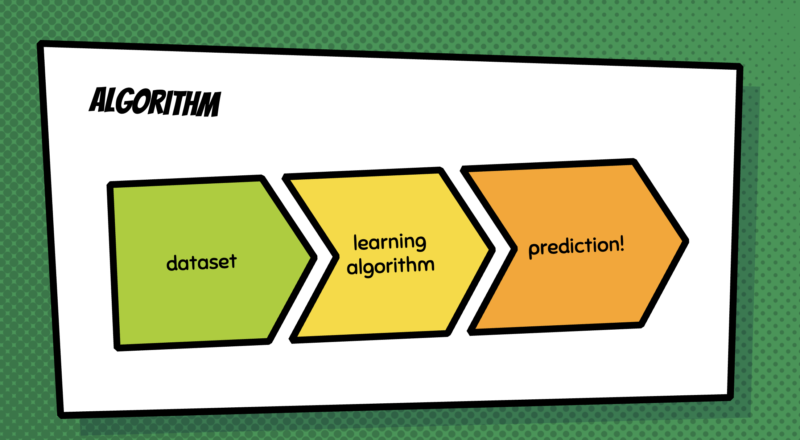
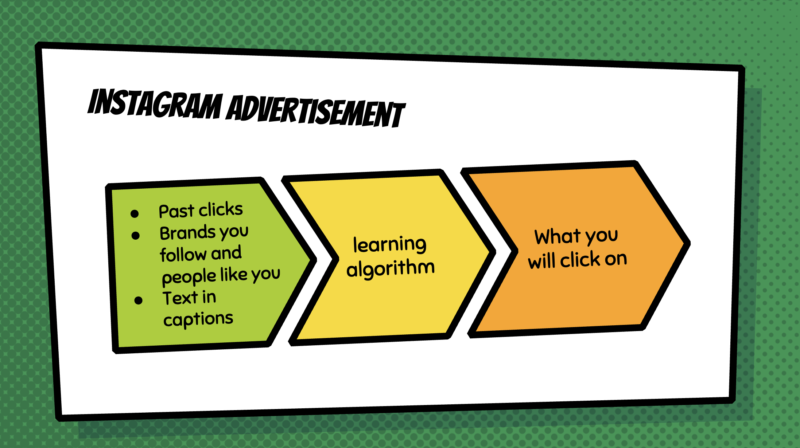
…as well as a number of fun and engaging activities that invite kids to explore these aspects of AI, for example:
- writing an algorithm for the best PB&J sandwich, including identifying possible stakeholders (e.g. kids, parents, doctor, companies) and charting ethical matrices for the various goals (e.g. taste, nutrition, cost) that a PB&J sandwich algorithm might have, depending on the stakeholder.

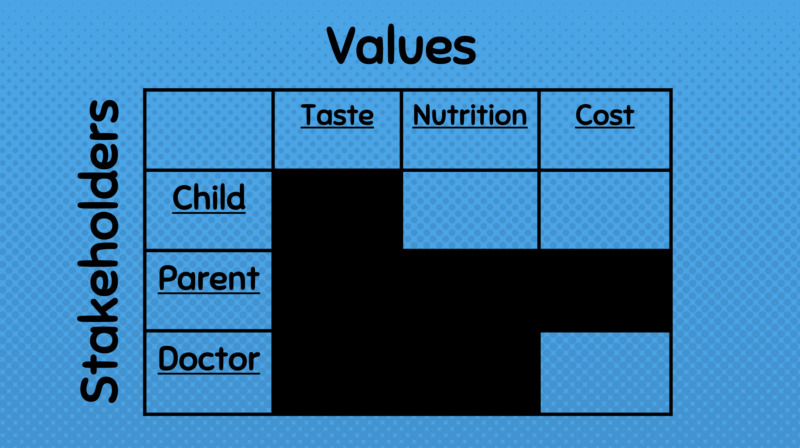
- writing a piece of speculative fiction that introduces a new AI-based technology (e.g. a wearable headset that allows you to “talk” to your devices, such as a search engine on your phone, simply by thinking) and explores both the good (e.g. people who can’t speak will be able to communicate with their friends and family) and the harm (e.g. parents could monitor their children’s thoughts) that might arise from the technology, including unintended consequences.

- redesigning email, YouTube, social media, and other online navigation to add points of “friction” that force breaks, preventing users from continuous engagement––an innovation proposed in 2021 by Facebook whistleblower Frances Haugen.
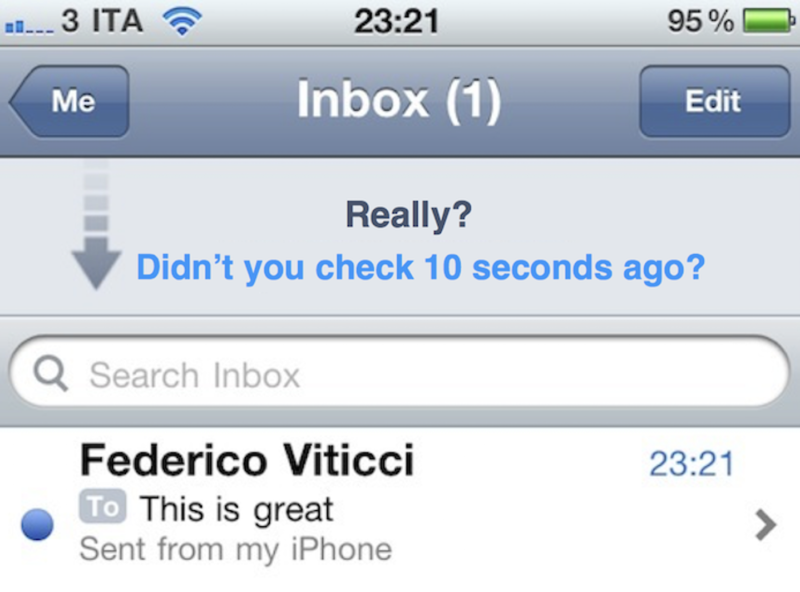

Another initiative out of MIT, RAISE (Responsible AI for Social Empowerment and Education), has also created activities to teach kids about AI through their free Day of AI program. Day of AI includes teacher slides and student resources that cover topics such as:[1][2][3]
- How to train a machine to learn
- Algorithm bias
- How machines can be creative
- Deepfakes
- Social media and misinformation
Other resources, such as the ones available through Kids Code Jeunesse and Elements of AI, will be presented to students to help them further explore AI concepts and how these concepts might provide inspiration for their stories.
What Can AI Learn From Kids?
Another potential source of inspiration for students in writing their stories is not just what kids need to know about AI but also what AI can learn from kids. This question has been the recent subject of research by Psychology and Philosophy professor Alison Gopnik, author of The Philosophical Baby: What Children’s Minds Tell Us about Truth, Love, and the Meaning of Life. In the 2019 anthology Possible Minds: 25 Ways of Looking at AI, edited by John Brockman, Gopnik contributes a chapter in which she argues:
Looking at what children do… may give programmers useful hints about directions for computer learning. Two features of children’s learning are especially striking. Children are active learners; they don’t just passively soak up data like AIs do. Just as scientists experiment, children are intrinsically motivated to extract information from the world around them through their endless play and exploration. Recent studies show that this exploration is more systematic than it looks and is well adapted to find persuasive evidence to support hypothesis formation and theory choice. Building curiosity into machines and allowing them to actively interact with the world might be a route to more realistic and wide-ranging learning.
Second, children, unlike existing AIs, are social and cultural learners. Humans don’t learn in isolation but avail themselves of the accumulated wisdom of past generations. Recent studies show that even preschoolers learn through imitation and by listening to the testimony of others. But they don’t simply passively obey their teachers. Instead, they take in information from others in a remarkably subtle and sensitive way, making complex inferences about where the information comes from and how trustworthy it is and systematically integrating their own experiences with what they are hearing.
Can AI learn to be curious? Can it learn to be social? In a 2017 paper titled “Curiosity-Driven Exploration by Self-supervised Prediction,” a team of AI researchers explored these questions, with positive results:
In this work we propose a mechanism for generating curiosity-driven intrinsic reward signal… We demonstrate that our agent significantly outperforms the baseline … with no curiosity…
Students can explore Gopnik’s and related work on what AI can learn from children and then develop possible storylines around the idea of “making AI more human” (the title of a 2017 article by Gopnik), in particular, more child-like.
Historical Figures in the History of AI
Yet another possible source of story ideas for students can be important historical figures and developments in the history of AI. (Both Ada Lovelace and Alan Turing have already been featured in picture books.) Students can do research on the history of AI and then present to children, through biography, historical fiction, or imaginative fiction, the story of the people, ideas, and discoveries that have advanced the field of AI.
The Two Basic Forms in which Picture Books Present Concepts to Children
Once students have researched a particular aspect of AI, they can explore the narrative form they might like to use to present that aspect to kids. Outlined below are the two basic narrative forms found in picture books––plot-driven and concept-driven narratives––though students may wish to apply the principles discussed here to longer fiction, such as Middle Grade or Young Adult, as well as to explore other literary forms, such as poetry or drama.
Plot-Driven Narrative
What is a plot-driven narrative?
According to Aristotle, a narrative is driven by a series of causally-linked events that consist of a beginning, a middle, and an end, ultimately leading to a character’s situation changing. The beginning is where something happens that begins to change a character’s situation (e.g. AI scientist mom comes home from work with a robot and announces that she needs her serious and studious son to teach a realistic AI robot how to play). The middle is where other things, often unexpected, happen that change their situation further (e.g. the robot exhibits an alignment problem that results from it being hyper-focused on mastering skills rather than on exploring possibilities). And the end is where something happens that completes the change in their situation (e.g. the boy manages to teach the robot that play is not just about perfecting abilities but also about discovery, leading the boy to realize this same truth himself).
The writer Kurt Vonnegut argues that plot-driven stories also have different shapes that unfold over time and that are determined by whether the protagonist is getting closer to or farther away from their goal. There is a YouTube video of Vonnegut plotting out various story shapes. Graphic designer Maya Eilam has also created visuals of the story shapes Vonnegut proposes.
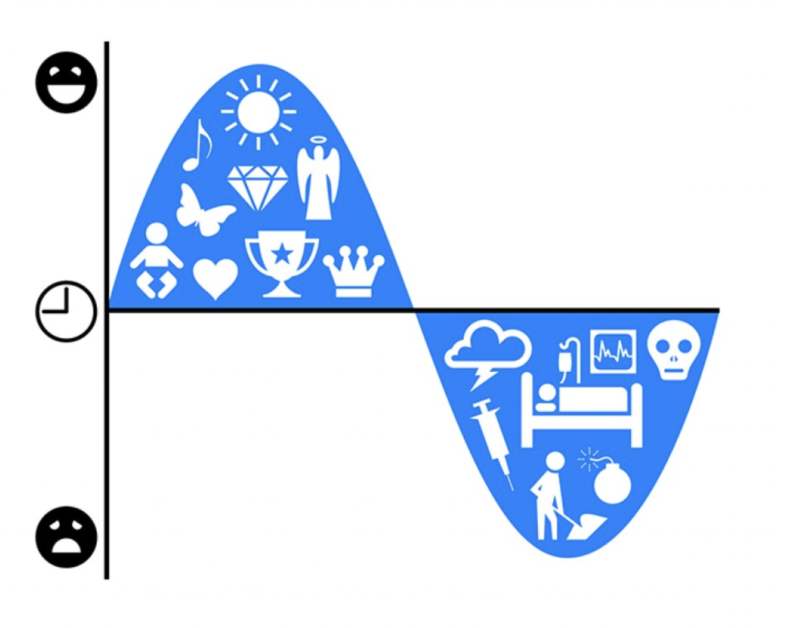
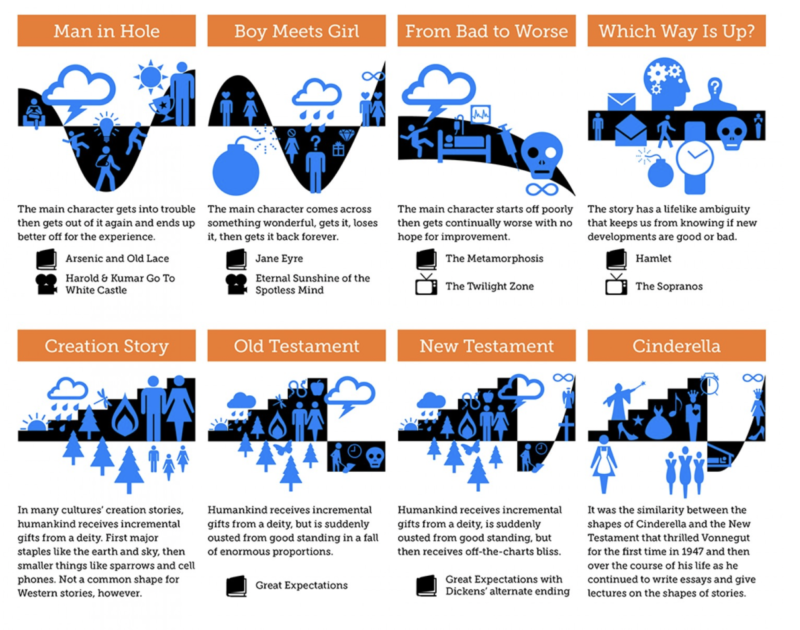
To take the “robot-who-must-learn-to-play” example above, we can plot out the story as one that starts off well, drops into a hole due the to the robot’s alignment problem, and then rises out of the hole again as the boy succeeds in teaching the robot, and himself, a new lesson.
In his 2021 book Craft in the Real World, writer Matthew Salesses reminds us that story shapes are cultural, and that different cultures tend to tell stories in different ways. In the Chinese, Korean and Japanese storytelling tradition, for instance, the story shape often follows a four-act structure known as Kishōtenketsu rather than Aristotle’s three-act structure, and the story tends to turn around a new way of seeing things rather than around a conflict.[4]
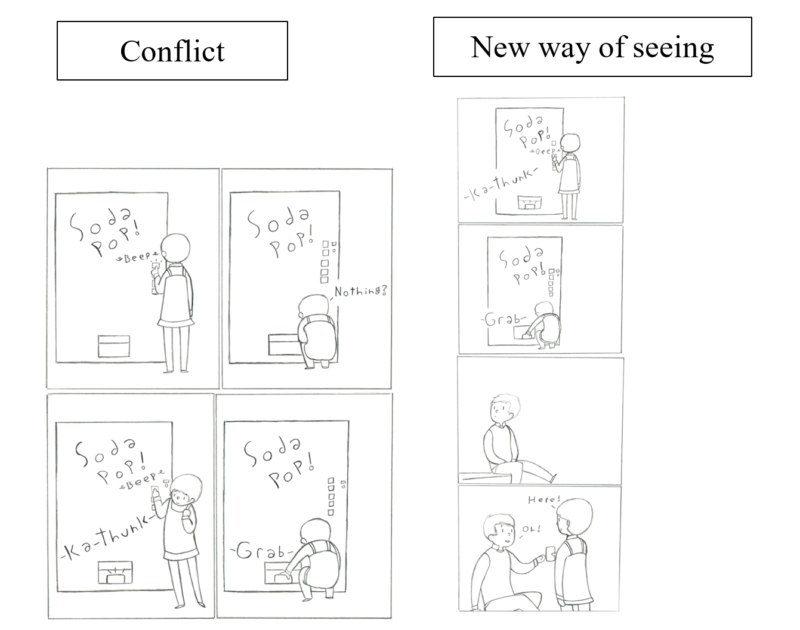
So if we go back to our “robot-who-must-learn-to-play” example above, we could re-envision the story as being not really about the robot having a problem (not knowing how to play) that must be overcome and more about the boy seeing AI and perhaps its role in society in a new way because of his interaction with the robot.
Stories about historical figures and developments in the history of AI would also likely follow a plot-driven narrative. To help them shape non-fiction narratives, students can explore the Pinterest site of non-fiction picture book writer Kirsten W. Larsen, where Larsen has outlined over a dozen ways that biographical stories can be structured.[5]
A few examples of plot-driven picture books include:
Where the Wild Things Are, by Maurice Sendak
Watercress, by Andrea Wang, illustrated by Jason Chin
The Dot, by Peter Reynolds
The Wish Tree, by Kyo Maclear, illustrated by Chris Turnham
City Dog, Country Frog, by Mo Willems, illustrated by Jon J Muth
Concept-Driven Narrative
A concept-driven narrative refers to a story that is not driven by plot but by an idea, e.g. ABCs, counting, how-to, opposites, etc.
The challenge in concept-driven narratives is how to make the reader ask “what’s next”––i.e. how to make them want to turn the page. There are various ways of engaging the reader’s interest in a concept book:
- original concept (e.g. an AI-themed ABC book)
- creating an alternating pattern (e.g. data, learning algorithm, prediction), which creates a sense of rhythm
- creating a build-up pattern, similar to rising tension in plot-driven narratives (e.g. one paperclip, a small pile of paperclips, a mountain of paperclips, in explaining how AI can go wrong, as in the case of the hypothetical Paperclip Maximizer)
- having a relatable character who explains the concepts (e.g. a personified algorithm named Ally) or who learns alongside the young reader
The education company ReadyAI has created a concept-book designed to teach kids what it calls “The 5 Big Ideas” about AI: Perception, Representation & Reasoning, Learning, Natural Interaction and Social Impact. The book features a kid-friendly robot named Robby who embarks with young readers on a journey through definitions, examples and more related to the 5 Big Ideas.
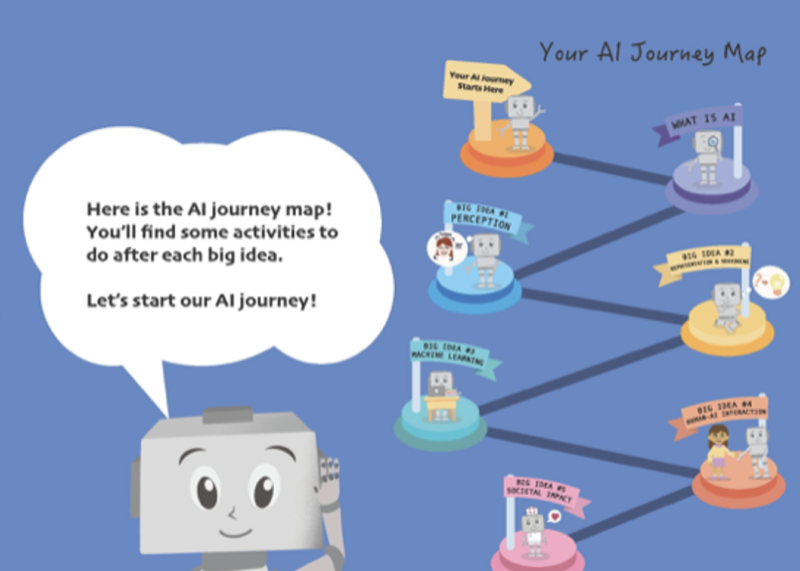
AI-themed books such as this are still a rarity in the children’s section of bookstores and libraries, however, though as AI concepts gradually permeate the public consciousness, the interest in such stories is likely to increase.
A few other examples of concept-driven picture books include:
My Love For You is Always, by Gillian Sze, illustrated by Michelle Lee
The Red Tree, by Shaun Tan
A is for Activist, by Innosanto Nagara
The Black Book of Colors, by Menana Cottin, illustrated by Rosana Faria
Moon Wishes, by Patricia Storms, illustrated by Milan Pavlovic
Handouts to Help Students Develop Their Own AI-Themed Story
The following handouts are designed to help students develop both AI and story concepts for their AI-themed story for kids.
AI-themed Topic Lists and Brainstorming
Handout to generate and brainstorm topics after students have had a first read-through of AI-reference materials.
Handout 1
AI-themed Research Notes and Small Group Discussion
Handout to help students keep track of their AI-themed research and to synthesize takeaways from small group discussions.
Handout 2
From AI-themed Topic/Research to AI-themed Story
Handout containing questions and exercises designed to help students turn their research and discussion around their topics into story form.
Handout 3
FOOTNOTES:
[1] https://docs.google.com/presentation/d/12evndBi95jUxJnO3gZYO7Pz7bS5FppJEY43pZ6J0jVU/edit?usp=sharing
[2] https://docs.google.com/presentation/d/1owkgARx9-6Pm_ZLG6gvL-7JgH-Z8YATHdSYH71HE6i4/edit?usp=sharing
[3] https://docs.google.com/presentation/d/1VLZTKNNR9zgI5UwRk46gAlx7iQ72MyYIqbClIVDx66s/edit?usp=sharing
[4] https://stilleatingoranges.tumblr.com/post/25153960313/the-significance-of-plot-without-conflict
[5] https://www.pinterest.ca/KirstenWLarson/




